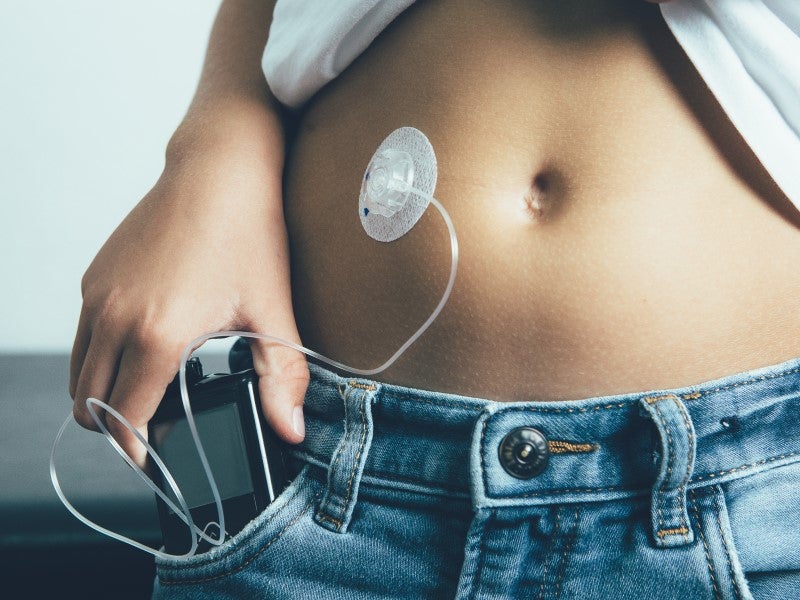
Diabetes care has vastly benefited from digitisation in the past few decades, providing more management options to patients with both type 1 and type 2 diabetes. Glucose levels can be checked using the traditional finger-prick tests or continuous glucose monitors, while traditional insulin infusions or insulin pumps can provide the required dosage. Recently, continuous glucose monitors and programmable insulin patch pumps have been driving growth in the diabetes care sector, as patients find that the value they get from these products outweighs the increased cost.
According to the World Health Organization (WHO), the prevalence of diabetes globally is approaching 9%. Type 2 diabetes affects the majority of these patients (>90%) and is rapidly increasing with growing obesity rates and ageing populations. Type 1 diabetes affects fewer patients (<10%) and usually presents during childhood. Type 2 diabetes is linked to obesity and ageing as risk factors, which are also increasing, especially in developed economies. This growth in patient population is unlikely to change in the near future and will create additional demand.
Diabetes care is recognised as essential to patients, with strong support and reimbursement from both public and private healthcare systems. The high cost of new systems, like continuous glucose monitors and insulin patch pumps, are offset by impressive quality-of-life improvements for patients, who are strong advocates for their inclusion to reimbursement schemes. The National Institute for Health and Care Excellence in the UK issued draft guidance in January for artificial pancreas coverage, an important consultation step towards a recommendation.
An important feature of the diabetes care market is that it is driven by consistent, inelastic, individual demand. This makes it very stable when compared to the business-to-business activities that drive banking and tech. The increase in interest rates globally has significantly reduced access to capital and is a major shift from the pandemic period, where companies were called on to adapt to new strategies. Diabetes care saw growth uninterrupted by the Covid-19 pandemic due to this and is likely to see the same insulation from an impending recession.
<!-- GPT AdSlot 3 for Ad unit 'Verdict/Verdict_In_Article' ### Size: [[670,220]] -- !-- End AdSlot 3 -->- SEO Powered Content & PR Distribution. Get Amplified Today.
- Platoblockchain. Web3 Metaverse Intelligence. Knowledge Amplified. Access Here.
- Source: https://www.medicaldevice-network.com/comment/diabetes-care-economic-conditions/
- :is
- 1
- a
- access
- activities
- Ad
- adapt
- Additional
- advocates
- and
- approaching
- ARE
- artificial
- AS
- Banking
- BE
- business-to-business
- by
- called
- CAN
- capital
- care
- change
- click
- Companies
- compared
- conditions
- consistent
- consultation
- continuous
- Cost
- coverage
- COVID-19
- COVID-19 pandemic
- create
- credit
- decades
- Demand
- developed
- Diabetes
- digitisation
- dosage
- draft
- drive
- driven
- driving
- during
- Economic
- Economic Conditions
- economies
- especially
- essential
- Excellence
- factors
- Feature
- few
- Find
- For
- from
- future
- get
- Globally
- Growing
- Growth
- guidance
- Have
- Health
- healthcare
- High
- HTTPS
- impending
- important
- impressive
- improvements
- in
- inclusion
- Increase
- increased
- increasing
- individual
- Institute
- interest
- Interest Rates
- Issued
- IT
- January
- jpg
- levels
- like
- likely
- linked
- major
- Majority
- MAKES
- management
- Market
- monitors
- more
- National
- Near
- New
- Obesity
- of
- offset
- on
- Options
- organization
- pandemic
- past
- Patch
- patient
- patients
- period
- plato
- Plato Data Intelligence
- PlatoData
- population
- populations
- presents
- private
- Products
- provide
- providing
- public
- pumps
- rapidly
- Rates
- recently
- recession
- recognised
- Recommendation
- Reduced
- required
- resilience
- Risk
- risk factors
- same
- schemes
- sector
- Share
- shift
- shutterstock
- significantly
- Size
- stable
- Step
- strategies
- strong
- support
- Systems
- tech
- tests
- that
- The
- the UK
- the world
- their
- These
- to
- towards
- traditional
- Type 2 diabetes
- Uk
- unit
- usually
- value
- which
- while
- WHO
- will
- with
- world
- World Health Organization
- zephyrnet












